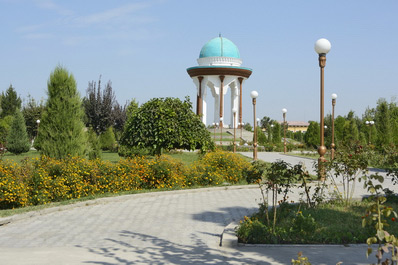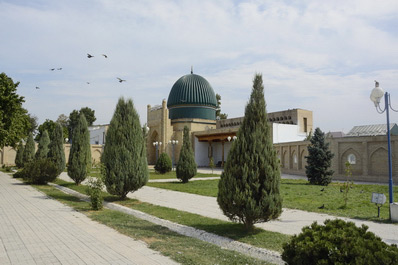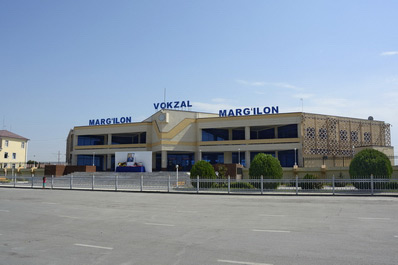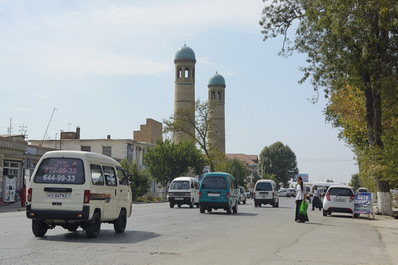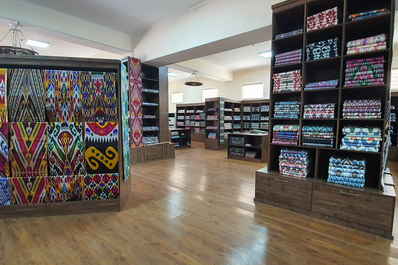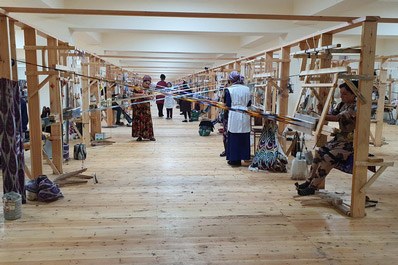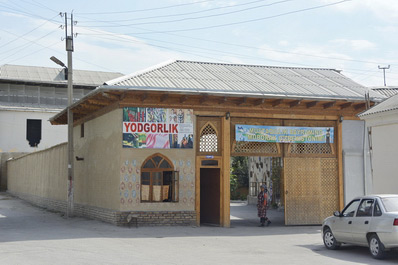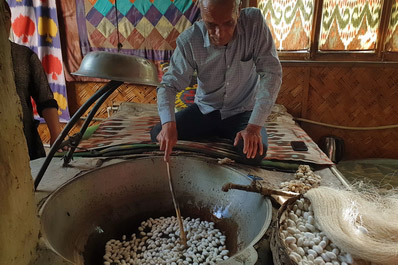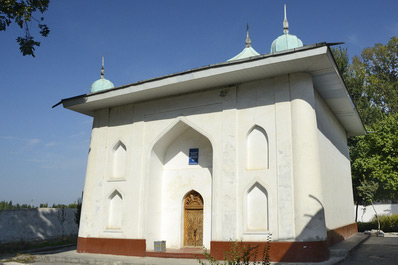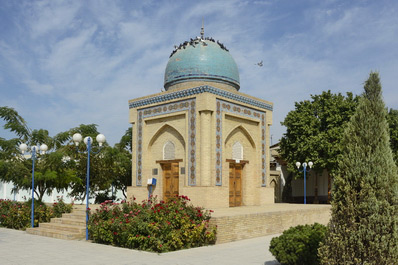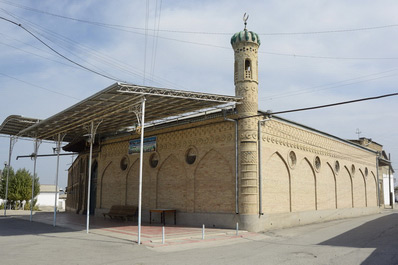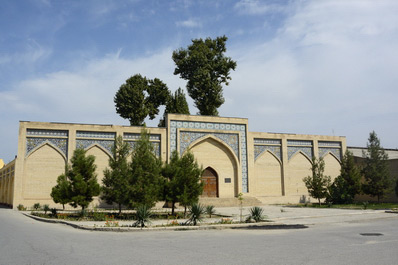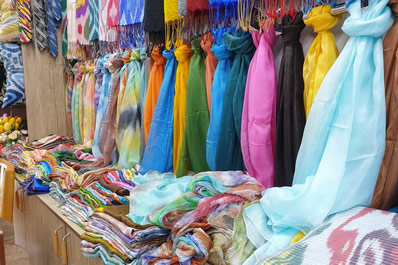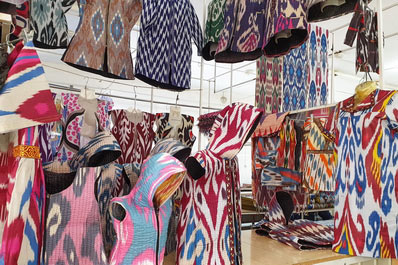Margilan, Uzbekistan
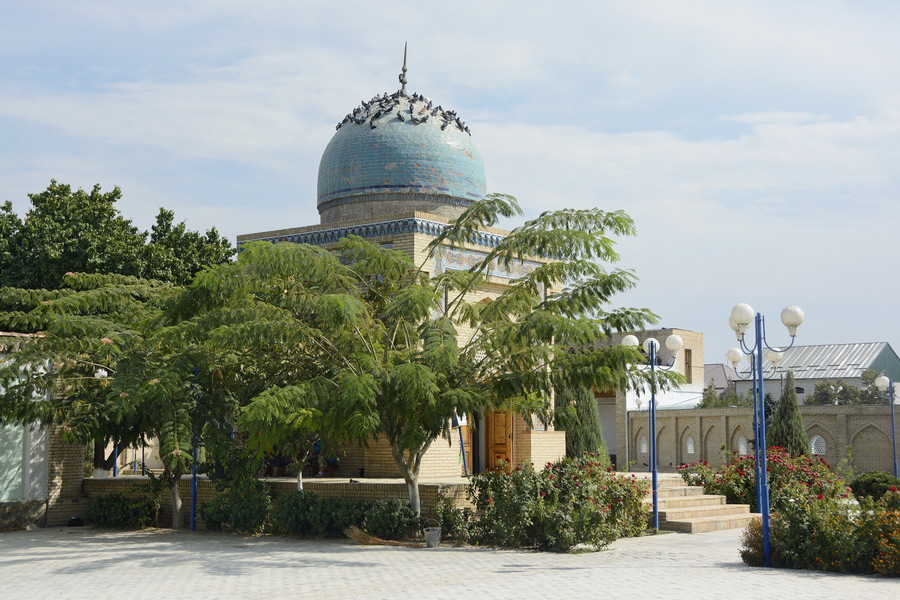
Former names: Moargilon, Margilon
Regions: Fergana
Elevation: 487 m
Square: 40.83 km²
Population: 215 400 (2019) - ru.wikipedia.org.
Nationals: Uzbek, Russian etc.
Time zone: UTC+5
Phone code: +998 73
Zip code: 151100
Automobile codes: 40-49
Margilan is a city in Fergana Region, known for its rich silk-making heritage. Every year, thousands of tourists from all over the globe flock here to witness the complete silk production process, from growing mulberry silkworms to weaving fabrics and making carpets. The city has been producing silk since the late 1st millennium BC.
In 2017, Margilan’s Craft Development Center was recognized by UNESCO as part of the Intangible Cultural Heritage. By 2022, it was named a World Craft City for its expertise in silk and ikat.
Historically, Margilan was a vital stop for caravans on the Great Silk Road, trading its silk with far-off places like Byzantium, Baghdad, Greece, Egypt, Khorasan, and Kashgar. This makes Margilan one of the world's oldest trading cities.
Margilan is famous for its community of skilled craftspeople. To this day, families of weavers, artisans, and masters of applied arts continue to live and work here. The city is home to two major silk factories: "Yodgorlik" and "Khan-atlas." Yodgorlik is the largest of its kind in Central Asia, where silk is still crafted by hand. Additionally, the city houses the "Fayzulodin" factory, a research institute for natural fibers, and a pottery school.
Located just 16 kilometers from Fergana, the region's largest city, Margilan today is home to nearly 247,000 people.
Back in 2007, Uzbekistan celebrated the 2000th anniversary of this historic city.
Brief History of Margilan
Margilan first pops up in written records in the 9th century. However, Uzbek archaeologists who've spent the last ten years digging around have discovered that people were living in what's now Margilan as far back as the 4th to 3rd centuries BC, where they were already practicing irrigated farming.
The name of the city supposedly comes from an encounter with Alexander the Great. Legend has it that when Alexander's troops arrived, the locals served them "murginon" (chicken with bread). Alexander enjoyed murginon so much that he suggested naming the city after the dish. However, historians dismiss this tale, proposing instead that the name stems from combining the Tajik word "марғ," meaning "green grass" or "meadow," and the ancient Iranian "лон," meaning "place." Thus, Margilan translates to "green place."
There’s another theory about the name "Margilan." It's believed that many silk craftsmen from the Gilan Valley settled here and named their new home after their old one.
Local guides in Margilan like to share a story that Alexander the Great was reburied here. This tale hangs on mainly because no one knows where Alexander's tomb really is. Yet, the supposed tomb shown to tourists in Margilan only dates back to the 18th century.
Over the years, Margilan has faced its share of destruction and has been both a small district town and a major city. But one constant is its renowned silk school. Many craftsmen settled here long ago, and today their descendants still weave unique, hand-made fabrics and carpets.
Margilan silk makers have been showcasing their skills at international exhibitions since 1896, claiming top awards in both Russia and across Europe before the revolution.
How to Get to Margilan?
The quickest and easiest way to reach Margilan is by flying into Fergana. From there, you can catch a bus or taxi to Margilan. Fergana receives regular flights from cities like Tashkent, Moscow, Saint Petersburg, Irkutsk, Kazan, Surgut, Novosibirsk, Baku, and even places as far as Istanbul and Dubai.
Alternatively, you can take a train from Tashkent that travels through Kokand and stops in Margilan before heading on to Andijan.
Buses and taxis also frequently run from Tashkent and nearby cities in the Fergana Valley like Kokand, Andijan, and Namangan to Margilan.
Margilan Sights & Attractions
If you visit the Margilan Crafts Development Center, recognized as part of UNESCO’s cultural heritage, you can see firsthand how traditional Uzbek textiles like atlas and adras are made. You can also watch women expertly weaving carpets. Many of these artisans belong to families that have been in the craft for generations.
The Khonakhan Mosque is not just any building; it’s the oldest religious structure in the Fergana Valley that’s still standing today. Built in the 16th century, it’s endured through numerous earthquakes.
You should definitely stop by the Yodgorlik factory too. This place offers a peek into the fascinating world of silk production. From raising mulberry silkworms and watching them spin incredibly fine threads, to seeing how a single cocoon can yield up to a kilometer of silk thread, and finally, the crafting of materials like khan-atlas, adras, bekasam, shoyi, jujunchu, boz, and carpets.
The Khodja-Maggiz Mausoleum, built in the early 18th century, stands out for its unique religious architecture. It’s well worth a visit.
The Pir-Siddiq memorial complex, also from the 18th century, includes a mosque, mausoleum, and minaret. There’s a touching story here about Pir Siddiq, a companion of the Prophet Muhammad, who hid from enemies in a cave. Legend has it that pigeons built nests at the cave's entrance, effectively camouflaging it and saving Siddiq from capture. This place, known locally as "pigeon place" (kaptarlik), also has a dovecote with pigeons considered sacred.
Near the local market, you’ll find the Toron-bazar Mosque. Built in the late 19th century, it might be younger than some of Margilan’s other historical sites, but it’s definitely worth checking out.
The Chakar Mosque, built in the early 20th century, is a popular spot for pilgrims. It replaced an old mosque that had fallen into disrepair. It’s a place of beauty, crafted by local artisans, reflecting the community's deep respect for its religious heritage.
The Said Akhmad-Khoja Madrasah from the 19th century had a brief operational period before closing shortly after the Soviet Union came into being. Restored and reopened after 1991, it now serves as a hub for national crafts and is listed among Uzbekistan’s cultural heritage sites.
Dedicated to Burhanuddin al-Marginani, a renowned scholar from the 12th century, the memorial complex at his namesake celebrates this Islamic theologian and jurist, known as Sheikh-ul-Islam. His influential work, "Hidoya," continues to be studied widely. The memorial itself is a beautifully designed round pavilion with intricate wooden carvings.
Margilan’s Markets
Make sure to visit the Kumtepa (Kuntepa) bazaar, where you can pick up local sweets, aromatic spices, and beautiful silk items. It’s a little quieter on Thursdays and Sundays, with fewer tourists around.
Also, drop by the shop at the Yodgorlik factory. Not only can you buy finished silk products and fabric cuts, but you can also observe the mesmerizing process of silk production.


